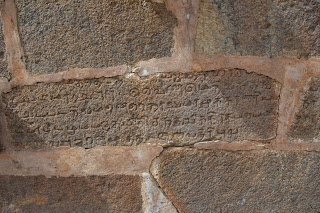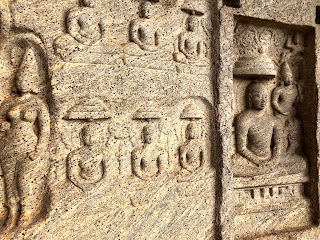Cheranmahadevi or Cheranmadevi is a small town about 1/2 an hour or 25 km west of Thirunelveli on the southern bank of the Thamirabarani river. It is a historical town with many ancient temples. In the two centuries that followed the Chola conquest of this region in the mid 10th century and after the Pandian resurgence in the 12th century, this town appears to have been an important cultural centre. In the following, Vijayanagar and Nayakkan periods, it seems to have lost its relevance. The temples here retain the Chola and Pandian influence.
The Bhakthvatsala Perumal Koil belongs to that period and was first built in the mid 11th century and renovated in the 12th. It is one of the finest examples of the architecture of the period and is in a pristine state of preservation. It is a nationally important monument protected by the ASI (The Archeological Survey of India). We have seen stone inscriptions previously in museums. Here you see them in their real settings. This is a true hidden gem not known to many.
Visited August 2019






































































